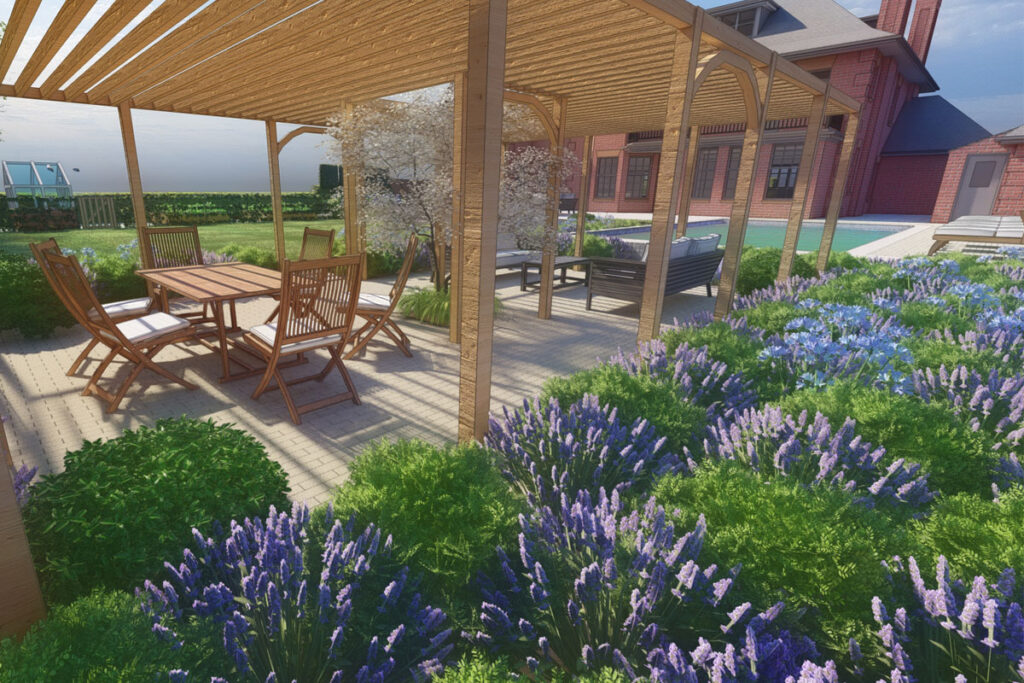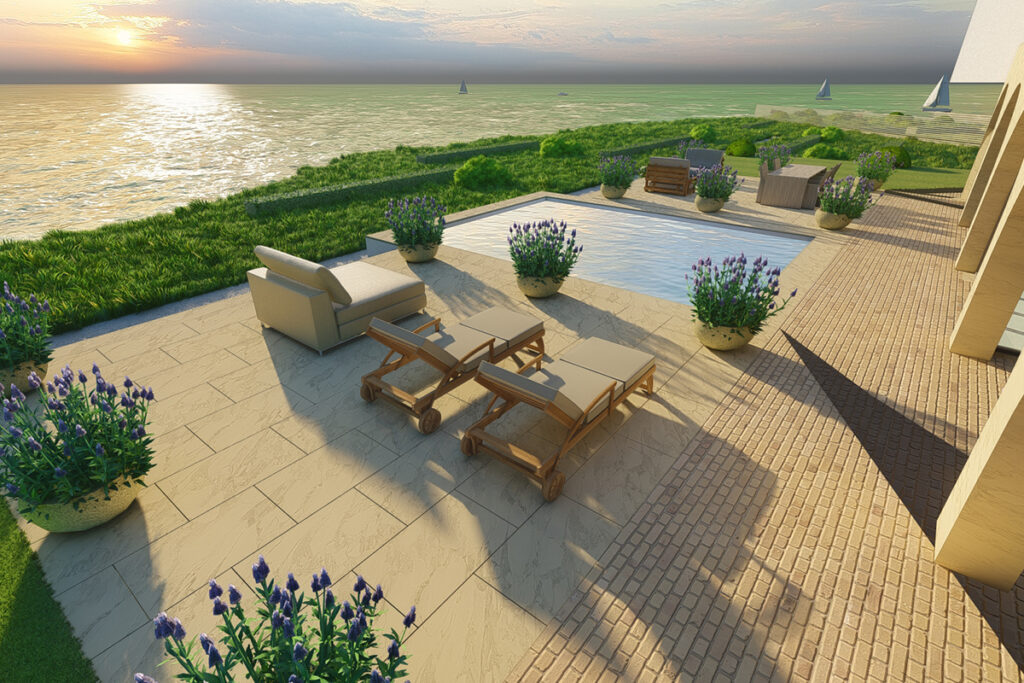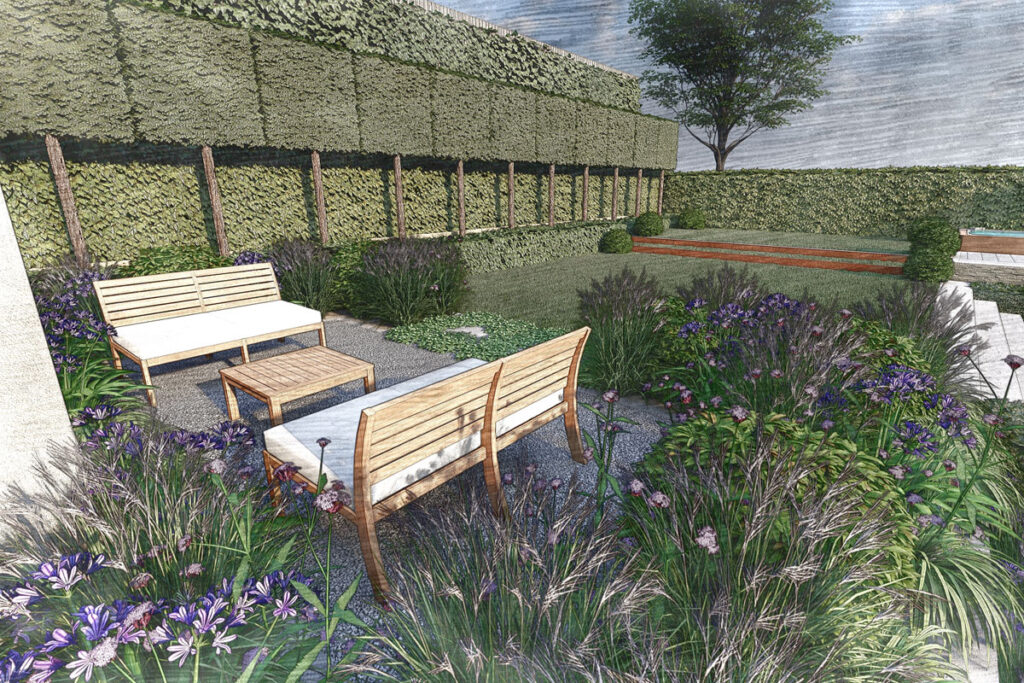Continuing from ‘The Importance of 3D Visuals’ blog, this is all about the increase in virtual reality within our design package. We all know that by presenting your clients with 3D visuals of their proposed gardens in our original design package helps bring their space to life and they can see exactly what we a proposing. At The Landscape Service, we take things that one step further.

I’m sure most of us have seen virtual reality (VR) headsets being used for gaming and entertainment. The advancement in VR has really taken off in recent years, and is now being used in a variety of different fields, including: military training, education and sport. NASA uses VR software to control robots on Mars. It has even begun to be used to treat mental health conditions by providing relaxing meditation experiences aimed at reducing stress and anxiety. Excitingly, this software (smartphone-based options particularly) is being increasingly used in architecture and garden design.
Even though that we have had access to VR for the past 3 years, we are now starting to use it in our client presentations. This allows the clients see their proposed space clearer and get a unique feel of the garden. We believe that not only does this give us an edge, but it also allows us to present the garden more freely as we can be talking to the client whilst they are exploring the space that we have dropped them in whilst we are talking about our design rationale.

As a design package, VR is been getting more and more exposure through gaming, films and also on garden design TV programmes. This helps us price work up easier as the clients will already have an understanding on what they are getting for their money and what level of service to expect. If your client is not familiar with VR, bringing the headset and examples of projects to initial site meetings is a great way to involve the client at an early stage, and may help you stand out. Design presentations should be an experience for the client. Delivering an engaging experience is my aim, not just a plan.
VR creates a digital 3D experience that we interact with, and allows the user to instantly engage with the space. They can explore and visualise designs by walking through gardens to see them before a build has even begun. In most cases, a digital 3D model of the site is created first, which can be produced through a variety of different software. The model must then be rendered and exported into a phone VR app.

When we are presenting design proposals using VR, I set the start position to where the client is standing, looking into their garden. The client then uses the headset, instantly transporting them into their new garden. Whether they look up, down, left or right, the virtual world follows. For large or complex projects, you can create multiple views for different zones of the garden. It’s such a positive and enjoyable experience for the designer and the client, to immerse yourself in the virtual world and creativity virtual reality allows. The client can instantly understand the design concept, layout, level changes and design features, which is an amazing selling point. Families can be thrilled, all getting a chance to take turns with the headset. Walk-through video animations can also be very effective, providing another perspective as it takes you through the garden. These can be created and uploaded easily to a tablet or smart device. This software is also brilliant because you can send everything to the client digitally, which allows more opportunities to review and enjoy the proposals.

I do feel that, as in industry this will start to become standard and we will see that the way we present our design packages evolve. I think the next step is developing the VR packages that we are using now and hopefully develop a package where virtual walkthroughs are possible which links with our 3D modelling software.


